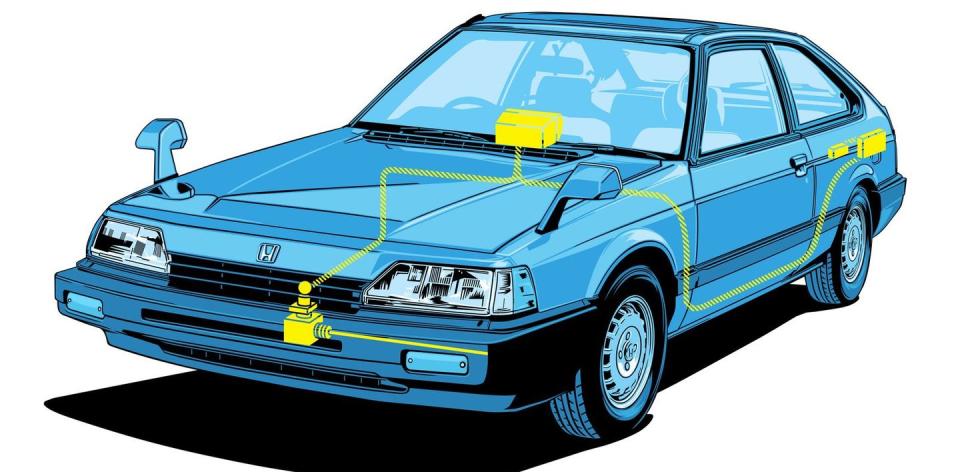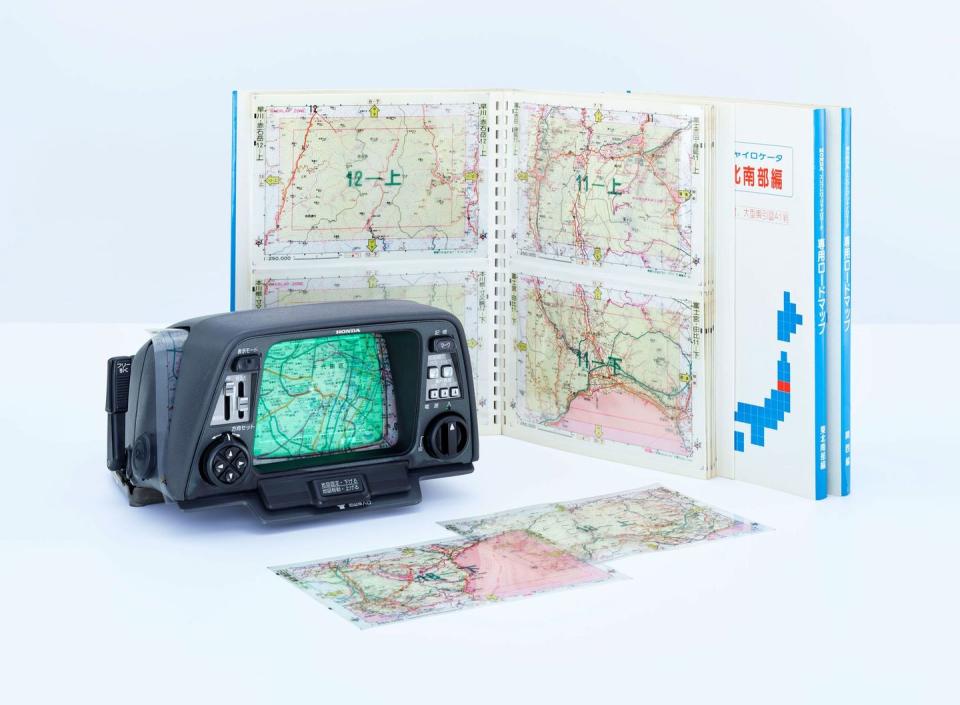The First In-Car Navigation System Was Powered by Helium

History records Honda’s mid-Seventies CVCC engine as an unqualified success, a shining example of ingenuity from a relatively new automaker. And the stratified-charge system was a victory, a clever mechanical design that allowed the company to meet tightening emissions standards without catalytic converters. But in the highly innovative atmosphere of Seventies Honda, the triumph of CVCC highlighted, in some executives’ minds, the company’s lagging position in an area of major automotive breakthroughs: electronics. Indeed, once Honda developed electronic fuel injection, CVCC was done.
This story originally appeared in Volume 6 of Road & Track.
SIGN UP FOR THE TRACK CLUB BY R&T FOR MORE EXCLUSIVE STORIES
So in 1976, Honda launched an intense R&D campaign that imagined an automated-vehicle future—one that could only be unlocked by an accumulation of smaller electronic advancements in every major automotive system. Fundamental to this was the car’s ability to know its own physical location. Easier imagined than achieved. Remember, at the time, the U.S. government’s satellite-based Global Positioning System was restricted to military use. Honda would have to lay a path for the future of navigation using dead reckoning. In other words, the car would have to calculate its position based on distance traveled and changes of direction.
Honda had to figure out how to adapt so-called inertial navigation systems from the likes of Boeing 747s and Apollo spacecraft to cars, without all the complexity and cost. Tracking the distance a car traveled was easy. Honda simply mounted a revolution-counting unit where a speedometer cable would go and called it a day.
The other part—detecting changes of direction—was more complicated. Typically, gyroscopes are used to detect directional changes of a vehicle in space, and the devices were already known to Honda’s R&D senior managing director, Tadashi Kume. He’d become fascinated by the potential automotive uses of gyroscopes after he watched a demonstration of Japan’s Self-Defense Forces tanks. Thanks to gyroscopes, the tanks could traverse rough ground while their guns remained level. Initially, Honda engineers thought the devices could be useful in a new suspension design. But in 1977, an R&D employee proposed the use of a simple gyroscope for navigation.

Large, elaborate aerospace gyroscopes, with their perfectly machined gimbals, were simply not practical. And they were overkill: Unlike aerospace machines, a car only needs to measure movement in two axes to determine its location. A simple gas-rate gyro was the solution. In Honda’s version, a stream of helium is fired at two heated wires within a sealed capsule. When the car turns, inertia diverts the stream, hitting one wire more than the other. The temperature difference between the two can then be interpreted as a direction change.
It was up to a trunk-mounted 16-bit computer to interpret the data and send it to a 6-inch CRT display mounted on the dash. The system, with the spectacular name Honda Electro Gyrocator, couldn’t choose a route for you, nor could it point out nearby Kentucky Fried Chicken locations. But it could trace a line on the little screen, and that was magic. Sure, users had to slide the appropriate transparent map overlay in front of the screen, swapping it out when they traveled to a different region. Buyers of the pricey unit, which went on sale in Japan-market Accords and Vigors in 1981, received a book of these maps covering all of Japan. The Electro Gyrocator’s capabilities were too limited and its price too high for it to be a commercial success. But it formed a basis for future GPS-based systems, which would arrive soon after the Electro Gyrocator’s demise. And importantly, it vaulted Honda to the forefront of automotive electronics.
You Might Also Like

 Yahoo Autos
Yahoo Autos 